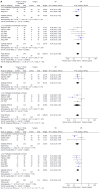Advanced gastric cancer: What we know and what we still have to learn
- PMID: 26811653
- PMCID: PMC4716026
- DOI: 10.3748/wjg.v22.i3.1139
Advanced gastric cancer: What we know and what we still have to learn
Abstract
Gastric cancer is a common neoplastic disease and, more precisely, is the third leading cause of cancer death in the world, with differences amongst geographic areas. The definition of advanced gastric cancer is still debated. Different stadiating systems lead to slightly different stadiation of the disease, thus leading to variations between the single countries in the treatment and outcomes. In the present review all the possibilities of treatment for advanced gastric cancer have been analyzed. Surgery, the cornerstone of treatment for advanced gastric cancer, is analyzed first, followed by an investigation of the different forms and drugs of chemotherapy and radiotherapy. New frontiers in treatment suggest the growing consideration for intraperitoneal administration of chemotherapeutics and combination of traditional drugs with new ones. Moreover, the necessity to prevent the relapse of the disease leads to the consideration of administering intraperitoneal chemotherapy earlier in the therapeutical algorithm.
Keywords: Advanced gastric cancer; Chemotherapy; Definition; Hypertermic intraperitoneal chemotherapy; Intraperitoneal; Surgery.
Figures






References
-
- American Cancer Society. Cancer Facts and Figures 2013. Atlanta: American Cancer Society; 2013. Available from: http://www.cancer.org/research/cancerfactsfigures/cancerfactsfigures/can....
-
- World Health Organization. GLOBOCAN 2012: Estimated Cancer Incidence. Mortality and Prevalence: Worldwide; 2012.
Publication types
MeSH terms
Substances
LinkOut - more resources
Full Text Sources
Other Literature Sources
Medical

